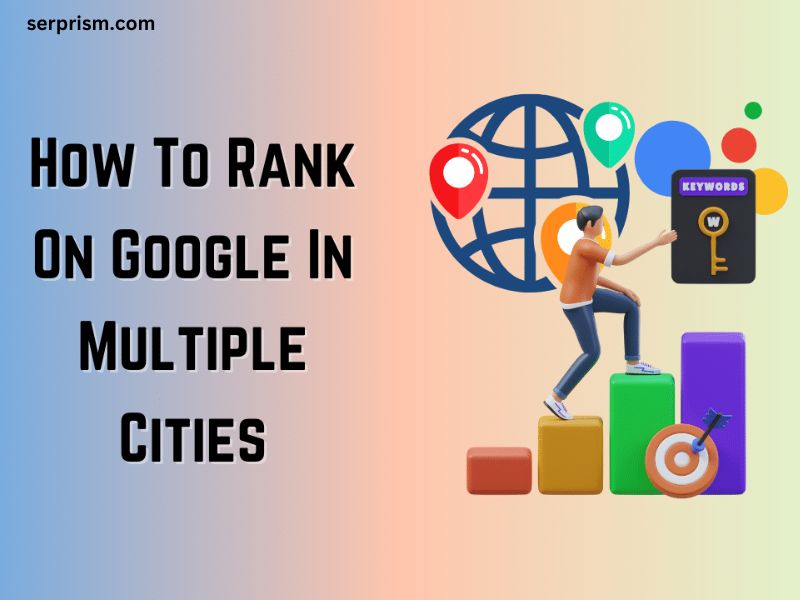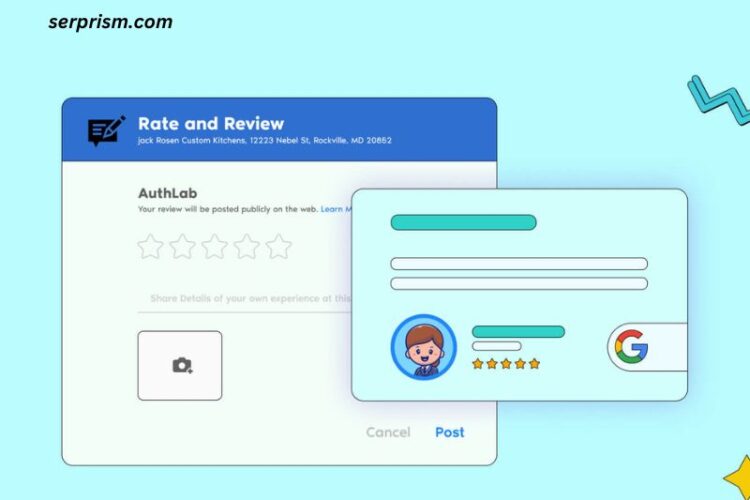
In today’s digital age, local search engine optimization (SEO) has become a cornerstone for businesses aiming to attract local customers. Ranking a website’s proximity across an entire city can significantly boost visibility, attract more customers, and drive conversions. Whether you own a small business with multiple locations or operate a service-based company, understanding how to rank your website for proximity searches throughout a city is crucial.
This comprehensive guide will walk you through the strategies, tools, and best practices for achieving top local search rankings across an entire city.
1. Understanding Proximity in Local SEO
Proximity refers to the geographic closeness of a business to the searcher. Search engines like Google prioritize results based on proximity, especially for local searches. For example, if someone searches for “plumbers near me,” Google’s algorithm will consider the user’s location and return results for plumbers closest to them. Therefore, if your website ranks high in proximity searches, it increases the likelihood that local customers will find your business.
2. Creating a Strong Google My Business Profile
A well-optimized Google My Business (GMB) profile is the foundation for ranking your website’s proximity all over a city. Here’s how to optimize your GMB profile:
- Accurate Information: Ensure that your business name, address, phone number (NAP), and website are correct and consistent with your website and other online directories.
- Business Categories: Choose the most relevant categories that describe your business. This helps Google understand your services and match you with relevant searches.
- Service Areas: Specify the areas within the city where you offer services. This is especially important for service-based businesses.
- Photos and Videos: Upload high-quality images and videos of your business, products, and services. Visual content can enhance your profile’s appeal and increase engagement.
- Customer Reviews: Encourage satisfied customers to leave positive reviews. Respond to reviews promptly to show that you value customer feedback.
A strong GMB profile signals to Google that your business is legitimate, active, and relevant to local searchers.
3. Optimizing On-Page SEO for Local Keywords
On-page SEO refers to the practice of optimizing individual web pages to rank higher and earn more relevant traffic. For local SEO, you need to focus on local keywords that target your city. Here’s how:
- Keyword Research: Use tools like Google Keyword Planner, SEMrush, or Ahrefs to identify keywords that include your city name or neighborhood. For example, if you’re a dentist in Los Angeles, target keywords like “Los Angeles dentist” or “dental clinic in Los Angeles.”
- Title Tags and Meta Descriptions: Incorporate your primary local keywords into your title tags and meta descriptions. These elements are crucial for both SEO and click-through rates (CTR).
- Header Tags (H1, H2, H3): Use header tags to structure your content and include local keywords where appropriate. For instance, an H1 tag might read, “Top-Rated Los Angeles Dental Clinic.”
- Content Optimization: Create high-quality content that naturally incorporates local keywords. This could include blog posts about local events, city-specific services, or guides for residents.
- NAP Consistency: Ensure that your business name, address, and phone number are consistently listed across all pages of your website.
By optimizing your on-page SEO with local keywords, you can signal to search engines that your website is highly relevant to searches in your city.
4. Building Local Citations and Backlinks
Local citations are online mentions of your business’s NAP information on websites and directories. Building local citations can improve your local SEO and proximity rankings. Here’s how:
- Local Directories: List your business on popular local directories like Yelp, Yellow Pages, and local Chamber of Commerce websites. Ensure that your NAP information is consistent across all listings.
- Industry-Specific Directories: If applicable, list your business on industry-specific directories. For example, if you’re a lawyer, consider legal directories like Avvo or FindLaw.
- Social Media Profiles: Create and optimize social media profiles for your business on platforms like Facebook, Twitter, LinkedIn, and Instagram. Include your business’s NAP information on these profiles.
- Local Blogs and Websites: Reach out to local bloggers, news websites, or influencers for backlinks to your website. Local backlinks signal to search engines that your business is relevant to the community.
Consistent and accurate citations across the web reinforce your business’s location and increase its authority in local search results.
5. Utilizing Local Schema Markup
Schema markup is a type of structured data that helps search engines understand the content on your website. Local schema markup can enhance your website’s visibility in local search results. Here’s how to use it:
- Add Local Business Schema: Implement local business schema markup on your website. This markup should include your business name, address, phone number, hours of operation, and other relevant details.
- Event Schema: If you host events, use event schema markup to provide details about upcoming events in your city. This can help your events appear in local search results and Google’s event listings.
- Product/Service Schema: For businesses offering specific products or services, use schema markup to highlight these offerings. Include location-based keywords to enhance local relevance.
Implementing schema markup can improve your website’s chances of appearing in rich snippets and other enhanced search features, increasing visibility for local searches.
6. Creating Location-Specific Landing Pages
If your business serves multiple areas within a city, consider creating location-specific landing pages. These pages should be optimized for each specific neighborhood or district you serve. Here’s how:
- Unique Content: Each location-specific landing page should have unique content tailored to the specific area. Include local landmarks, events, and relevant information that resonates with residents.
- Local Keywords: Optimize each page with local keywords that include the neighborhood name. For example, if you serve the Hollywood area of Los Angeles, include keywords like “Hollywood dental services.”
- NAP Information: Include your business’s NAP information on each landing page. If you have multiple locations, provide the specific address and contact details for each one.
- Internal Linking: Use internal linking to connect your location-specific landing pages to other relevant pages on your website. This improves site navigation and SEO.
Location-specific landing pages allow you to target multiple areas within a city, increasing your chances of ranking high in proximity searches across the entire city.
7. Leveraging Social Media for Local Engagement
Social media platforms are powerful tools for engaging with your local audience and boosting your local SEO efforts. Here’s how to leverage social media for proximity ranking:
- Local Content: Share content related to your city, such as local news, events, or community involvement. This helps establish your business as a local authority.
- Geo-Targeted Ads: Use social media advertising platforms like Facebook Ads to create geo-targeted campaigns that reach users within specific areas of your city.
- Local Hashtags: Use city-specific hashtags in your social media posts to increase visibility among local users. For example, use hashtags like #LosAngelesBusiness or #NYCEats.
- Engage with the Community: Respond to comments, messages, and reviews from local users. Participate in local online communities and groups to build relationships with potential customers.
Active social media engagement signals to search engines that your business is involved in the local community, which can positively impact your proximity rankings.
8. Mobile Optimization for Local Searches
Mobile optimization is critical for local SEO, as many users conduct proximity searches on their mobile devices. Here’s how to ensure your website is mobile-friendly:
- Responsive Design: Ensure that your website is fully responsive, meaning it adapts to different screen sizes and devices. This provides a seamless user experience on mobile devices.
- Fast Load Times: Optimize your website’s load times by compressing images, minimizing code, and using a content delivery network (CDN). Mobile users expect fast-loading websites.
- Click-to-Call Buttons: Include click-to-call buttons on your website, especially on location-specific landing pages. This makes it easy for mobile users to contact your business directly.
- Mobile-Friendly Forms: Simplify forms on your website for mobile users. Use large buttons and fields that are easy to fill out on a small screen.
A mobile-optimized website enhances the user experience and increases the likelihood that your business will rank higher in mobile proximity searches.
9. Tracking and Analyzing Local SEO Performance
Finally, it’s essential to track and analyze your local SEO performance to measure the effectiveness of your proximity ranking efforts. Here’s how:
- Google Analytics: Use Google Analytics to monitor traffic to your website from local searches. Look for trends in user behavior, such as the pages they visit and the actions they take.
- Google Search Console: Google Search Console provides insights into how your website is performing in search results. Monitor your local keyword rankings and click-through rates (CTR).
- Local SEO Tools: Use local SEO tools like BrightLocal, Moz Local, or Whitespark to track your proximity rankings, manage citations, and monitor reviews.
- Review Feedback: Regularly review customer feedback and reviews to identify areas for improvement. Address any negative reviews promptly to maintain a positive online reputation.
By consistently tracking your local SEO performance, you can make data-driven decisions to improve your proximity rankings across the city.
Conclusion
Ranking a website for proximity all over a city requires a combination of local SEO strategies, from optimizing your Google My Business profile to creating location-specific landing pages and leveraging social media engagement. By following the steps outlined in this guide, you can increase your website’s visibility, attract more local customers, and ultimately grow your business.
Remember, local SEO is an ongoing process. Regularly update your strategies, monitor performance, and stay informed about changes in search engine algorithms to maintain your competitive edge. With dedication and the right approach, your website can achieve top proximity rankings throughout your city.




